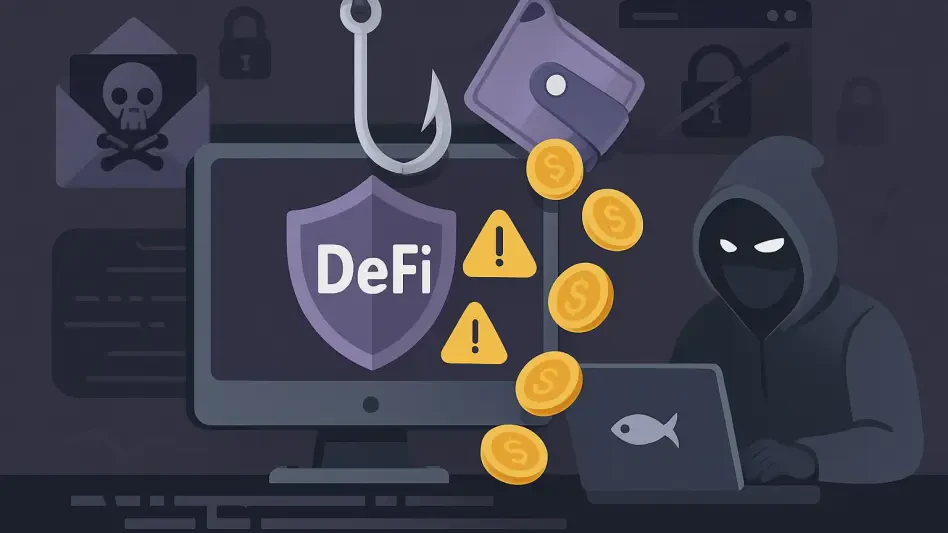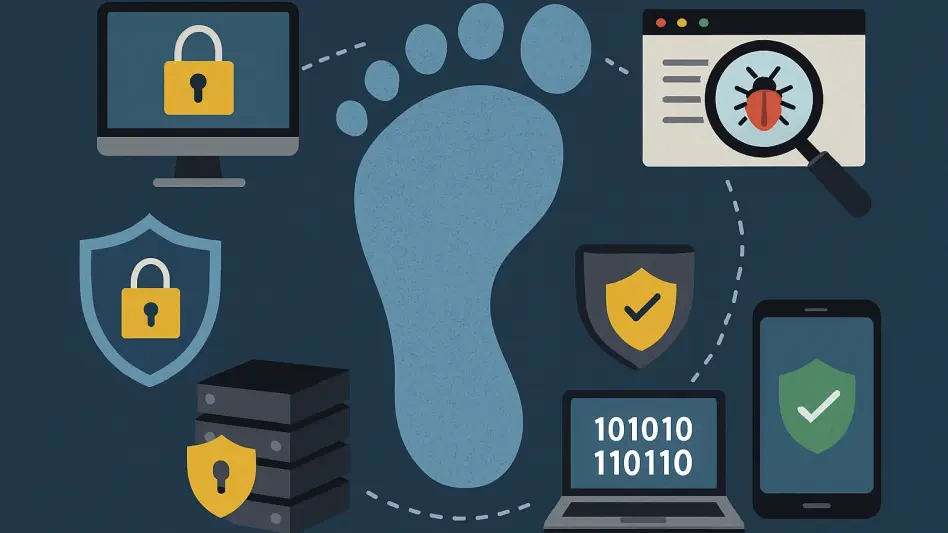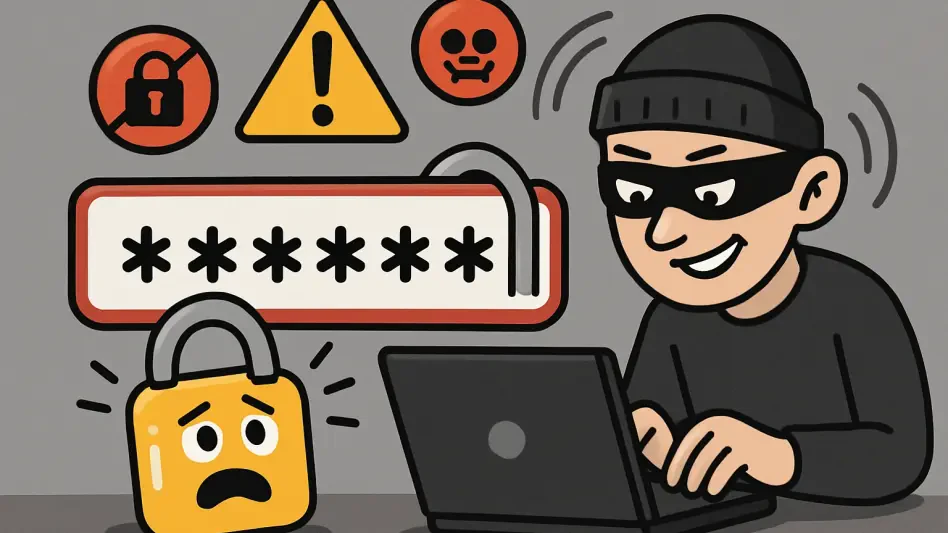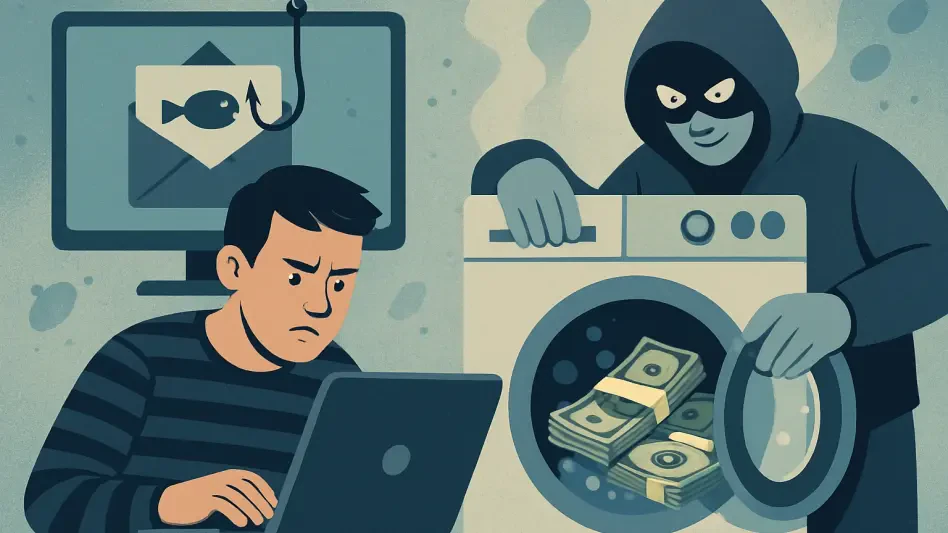In the ever-shifting landscape of decentralized finance (DeFi), a jaw-dropping incident has emerged that underscores the inherent dangers of the cryptocurrency world: a hacker who masterfully exploited a vulnerability in the UXLINK blockchain to illicitly mint $48 million worth of tokens has ironically lost everything to a phishing scam. This extraordinary tale of cybercrime turned sour reveals not only the technical vulnerabilities within blockchain systems but also the startling human errors that can unravel even the most calculated schemes. It’s a stark reminder that in the unregulated realm of DeFi, no one—whether a legitimate user or a seasoned criminal—is immune to the pervasive threats that lurk in the digital shadows. The story serves as a compelling entry point into a broader discussion about security, trust, and the relentless ingenuity of scammers in an ecosystem where fortunes can be made or lost in an instant.
The Vulnerability of DeFi Systems
Technical Exploits and Their Consequences
The saga began with the hacker’s cunning exploitation of a critical flaw in the UXLINK blockchain, a maneuver that allowed them to generate $48 million in tokens without authorization. This incident lays bare the persistent challenges in securing DeFi platforms, which are often heralded for their innovative use of blockchain technology yet remain susceptible to sophisticated attacks. Such exploits are not mere isolated events but part of a troubling pattern where technical weaknesses can lead to massive financial windfalls for cybercriminals. The ease with which the vulnerability was leveraged raises serious concerns about the robustness of current security protocols in decentralized systems, where a single flaw can compromise millions in value. As DeFi continues to attract significant investment, the pressure mounts on developers to fortify these platforms against increasingly adept adversaries who are quick to capitalize on any oversight.
Beyond the immediate financial impact, the exploitation of UXLINK highlights a broader systemic issue within the DeFi space: the race to innovate often outpaces the implementation of rigorous security measures. While blockchain technology is designed to be tamper-resistant, the reality is that no system is entirely foolproof, especially when new protocols are rolled out without exhaustive testing. The consequences of such lapses are profound, eroding trust among users and investors who expect a certain level of safety in these cutting-edge financial tools. This case serves as a cautionary tale for the industry, emphasizing that without proactive and comprehensive security audits, DeFi platforms risk becoming prime targets for exploitation. The fallout from such incidents can deter adoption and hinder the long-term credibility of decentralized finance as a viable alternative to traditional systems.
Human Error as a Weak Link
While technical exploits pose a significant threat, the UXLINK hacker’s downfall through a phishing scam reveals an equally damaging vulnerability: human error. Despite their apparent expertise in navigating complex blockchain systems, the hacker fell victim to a deceptive tactic that exploited trust rather than code, ultimately losing access to their stolen $48 million. Phishing attacks, which often masquerade as legitimate communications, prey on universal human tendencies like curiosity or haste, making them a potent danger regardless of technical know-how. This incident illustrates that even the most skilled individuals in the crypto space can be undone by a momentary lapse in judgment, highlighting the dual nature of risk in DeFi where both software and human behavior are points of failure.
The prevalence of human-centric vulnerabilities underscores a critical oversight in the DeFi ecosystem: the lack of education and safeguards against social engineering tactics. Unlike traditional financial sectors where user training and fraud detection systems are commonplace, the decentralized nature of crypto often leaves individuals to fend for themselves against scams. The UXLINK case is a stark example of how a single misstep—such as clicking on a fraudulent link or sharing sensitive credentials—can negate even the most elaborate criminal schemes. It points to an urgent need for the industry to prioritize awareness campaigns and develop tools that can help users identify and avoid deceptive practices. Without addressing this human element, the security of digital assets remains incomplete, leaving the door open for scammers to exploit even the most fortified systems through simple manipulation.
Phishing: A Persistent and Deceptive Threat
The Mechanics of Phishing Scams
At the heart of the UXLINK hacker’s loss lies a phishing attack, a deceptively simple yet devastatingly effective scam that tricked them into relinquishing control of their $48 million in stolen tokens. These attacks typically involve fraudulent emails, messages, or websites that mimic legitimate sources, luring victims into revealing sensitive information like private keys or wallet credentials. The success of such schemes does not rely on complex coding or system hacks but on exploiting human psychology, making them a low-barrier entry point for scammers in the crypto world. In this case, the hacker likely encountered a cleverly disguised communication that prompted them to act without due diligence, resulting in the complete loss of their illicit gains. This tactic’s effectiveness, even against a presumably savvy individual, underscores its insidious nature and widespread appeal among cybercriminals.
Delving deeper into the mechanics, phishing scams often employ urgent or enticing language to provoke immediate action, bypassing rational scrutiny. For instance, a fake notification about a compromised wallet or an exclusive opportunity can create panic or greed, leading even cautious users to lower their guard. The UXLINK incident reveals how tailored these attacks can be, potentially targeting specific individuals with knowledge of their recent activities to enhance credibility. This personalized approach amplifies the scam’s impact, as victims feel a false sense of familiarity or urgency. The broader implication is that as long as human interaction remains a part of digital transactions, phishing will persist as a formidable threat in DeFi. Countering it requires not just technological solutions but a fundamental shift in how users approach unsolicited communications in an ecosystem rife with deception.
A Growing Danger in Crypto
The rise of phishing as a dominant threat in the cryptocurrency space is a trend that shows no sign of abating, fueled by the decentralized and often anonymous nature of transactions. Unlike technical exploits that require specialized skills, phishing attacks can be executed with minimal resources, making them accessible to a wide range of scammers. The UXLINK hacker’s experience is a high-profile example of how pervasive this danger has become, ensnaring not just naive users but also those deeply embedded in the crypto underworld. The lack of centralized oversight in DeFi further compounds the issue, as there are few mechanisms to track or prevent such scams before they strike. This growing menace casts a shadow over the industry’s promise of autonomy, revealing a dark underbelly where even significant gains can vanish due to a single deceptive message.
Moreover, the psychological underpinnings of phishing ensure its continued success, as it capitalizes on universal human flaws like trust or distraction. Historical data shows that losses from these scams have escalated over recent years, with attackers refining their methods to exploit the rapid growth of DeFi adoption. The anonymity provided by blockchain transactions often emboldens scammers, who operate with little fear of repercussions, knowing that tracing stolen funds is a daunting task. The UXLINK case exemplifies how even the fallout from major hacks can become fodder for further fraud, creating a ripple effect of victimization. Addressing this escalating threat demands a multifaceted approach, including user education on recognizing phishing attempts and the development of real-time alert systems to flag suspicious activity. Without such measures, the crypto space risks alienating users who find the constant threat of deception too burdensome to navigate.
The Irony of Hacker-on-Hacker Crime
No One Is Immune
The UXLINK incident introduces a fascinating and ironic dimension to the world of cybercrime: the phenomenon of “hacker-on-hacker” exploitation, where even perpetrators of digital theft are not safe from their own kind. After successfully minting $48 million in tokens through a sophisticated exploit, the hacker became a victim themselves, losing everything to a phishing scam orchestrated by another scammer. This twist shatters any illusion that technical expertise or criminal intent offers protection against fraud in the DeFi space. It reveals a brutal reality where the same tactics used to prey on unsuspecting users can just as easily be turned against those who wield them, creating a perilous environment of mistrust. The notion of immunity is debunked, as this case proves that vulnerability is a universal condition in an ecosystem driven by deception and opportunism.
This dynamic also highlights the unpredictable nature of crime within decentralized finance, where alliances are fleeting and self-interest reigns supreme. The hacker, likely confident in their ability to outsmart others, underestimated the cunning of their peers, falling for a scam that exploited a momentary lapse in vigilance. Such incidents challenge the stereotype of cybercriminals as untouchable masterminds, instead portraying them as equally susceptible to the pitfalls of human error. The broader takeaway is that the DeFi landscape operates as a level playing field of risk, where neither legitimacy nor malice guarantees safety. This unsettling parity suggests that the tools of fraud, once unleashed, respect no boundaries, turning the crypto world into a battleground where even the most adept players must constantly guard against betrayal from within their own ranks.
A Cycle of Exploitation
The loss of stolen funds to another scammer in the UXLINK case exemplifies a disturbing cycle of exploitation that permeates the cryptocurrency underworld. Historical incidents, such as the Ronin Network hack a few years back, demonstrate how ill-gotten gains often become targets for further theft, passing from one criminal hand to another in a relentless chain of fraud. This pattern reveals a systemic flaw in DeFi: the absence of accountability or secure holding mechanisms means that stolen assets are rarely safe, even for those who acquire them through illicit means. The constant movement of funds among criminal networks creates a vicious loop, where each theft fuels the motivation for the next, perpetuating instability within an already volatile ecosystem.
This cycle of exploitation is further exacerbated by the decentralized structure of crypto, which offers little in the way of barriers to prevent or recover stolen assets. Once funds are lost, whether through an initial hack or a subsequent scam like phishing, tracing and reclaiming them becomes a near-impossible task due to the anonymity baked into blockchain transactions. The UXLINK hacker’s experience is a microcosm of this broader issue, illustrating how the very nature of DeFi—designed for freedom and autonomy—can backfire spectacularly when exploited by multiple layers of criminal intent. Breaking this cycle requires innovative solutions, such as enhanced tracking tools or industry-wide standards for asset security, though implementing them without compromising decentralization remains a formidable challenge. Until then, the crypto space will likely continue to witness these recursive patterns of theft and loss.
Systemic Challenges in Decentralized Finance
The Regulatory Vacuum
One of the most glaring issues illuminated by the UXLINK incident is the regulatory vacuum that defines much of the DeFi landscape, leaving all participants—legitimate or otherwise—exposed to rampant fraud. Unlike traditional financial systems, where oversight bodies and safety nets provide a degree of protection against loss, the decentralized ethos of cryptocurrency offers no such assurances. When the hacker lost $48 million to a phishing scam, there was no authority to turn to for recourse, a reality that mirrors the experience of countless other victims in this space. This lack of regulation, while a cornerstone of DeFi’s appeal for fostering innovation and independence, creates an environment where scams and exploits flourish unchecked, undermining confidence in the technology’s potential as a mainstream financial tool.
The implications of this regulatory void extend beyond individual losses, posing a threat to the broader adoption of decentralized finance. Investors and users, wary of the constant risk of theft with little hope of recovery, may hesitate to engage with DeFi platforms, stunting growth and innovation. The UXLINK case serves as a poignant example of how the absence of standardized protections can amplify the impact of cybercrime, turning a single incident into a cautionary tale for the entire industry. While complete regulation might contradict the principles of decentralization, some form of voluntary guidelines or collaborative frameworks could help mitigate fraud without sacrificing autonomy. Until such measures are explored, the DeFi space remains a high-stakes gamble, where the promise of financial freedom is perpetually shadowed by the specter of unchecked exploitation.
Balancing Freedom and Security
The dramatic reversal of fortune in the UXLINK exploit raises pivotal questions about how to strike a balance between the freedom inherent in DeFi and the urgent need for security to protect participants. The hacker’s initial success in minting $48 million exposed technical vulnerabilities, while their subsequent loss to phishing highlighted human-centric risks, together painting a picture of an ecosystem in desperate need of stability. Preserving the decentralized nature of cryptocurrency is central to its identity, yet incidents like this underscore that unfettered freedom can come at a steep cost when safeguards are absent. Finding a middle ground where innovation thrives alongside robust protections is essential if DeFi is to maintain credibility and attract sustained engagement from a diverse user base.
Achieving this balance involves navigating complex trade-offs, as any move toward security could be perceived as a step away from the core tenets of decentralization. Solutions might include the adoption of industry-wide best practices for platform security, such as mandatory audits or user verification processes to deter phishing attempts. Additionally, fostering a culture of vigilance through education can empower users to better protect themselves against common scams. The UXLINK incident acts as a wake-up call, revealing that without concerted efforts to address both technical and behavioral vulnerabilities, the DeFi space risks alienating participants who find the constant threat of loss too daunting. Moving forward, stakeholders must collaborate to devise mechanisms that enhance safety while respecting the autonomous spirit of cryptocurrency, ensuring that the technology’s transformative potential is not derailed by its own inherent risks.








